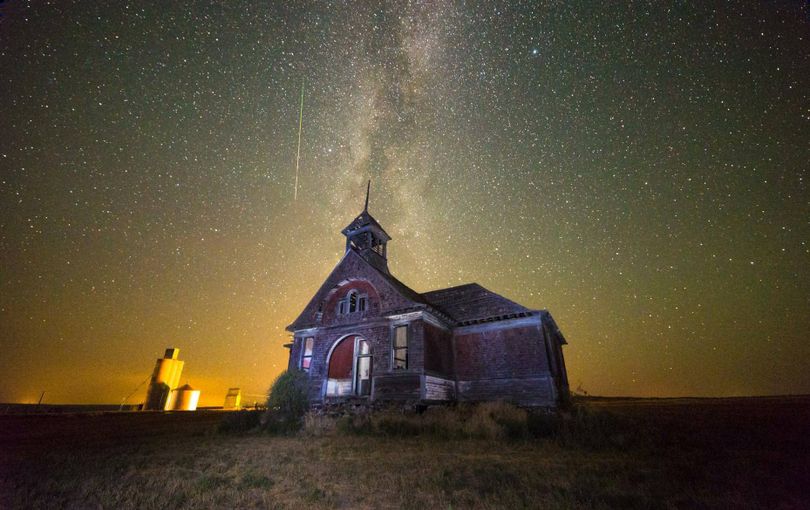Find a high spot tonight for peak of Perseid meteor shower

SKYWATCHING -- Tonight and Friday are among the best nights of the year for skywatchers to be camping high on an open mountain.
The annual Perseid meteor shower is peaking with high probability in early morning hours of seeing "shooting stars" streaking across the night sky. With only a sliver of moon this week, the blazing meteors -- some just the size of a grain of sand -- will be easier to see that in years with fuller moon phases.
Although the meteors appear to come from Perseus, they are part of a debris trail left by Comet Swift-Tuttle, which the Earth encounters every August.
For years when the Landers kids were young, we would rent a night in a national forest fire lookout during the Perseids. But there are many other options for getting high and away from city lights to get the best viewing of a dark night sky.
We also brought fold out lawn chairs so we could lie back on a pillow -- in a sleeping bag if necessary -- to soak in the experience. Hot beverages and good snacks help pass the time between ooohs and ahhhhs.
The Perseids arise when the Earth runs into pieces of debris floating in the solar system that were left behind by Comet Swift-Tuttle,
According to eNature, the 17-mile-wide ball of ice and debirs orbits the sun about once every 133 years and made its last close pass by the sun in 1992.
The comet’s left-behind debris zips through the atmosphere at about 133,000 miles per hour and bursts about 60 miles overhead. Most of the meteors are small, about the size of a grain of sand, but some can be as large as a golf ball. You’ll be able to see many of the small bursts, but it’s the handful of large ones that create jaw-dropping fireballs as they blaze across the sky.
EarthSky.com has LOTS more detail on the meteor shower »